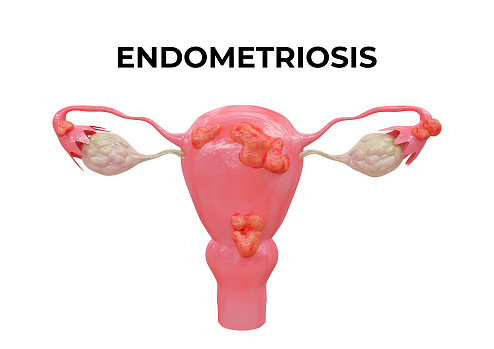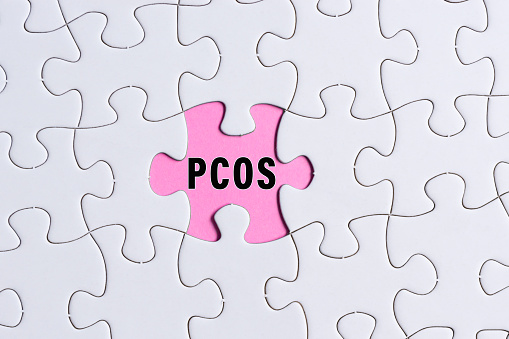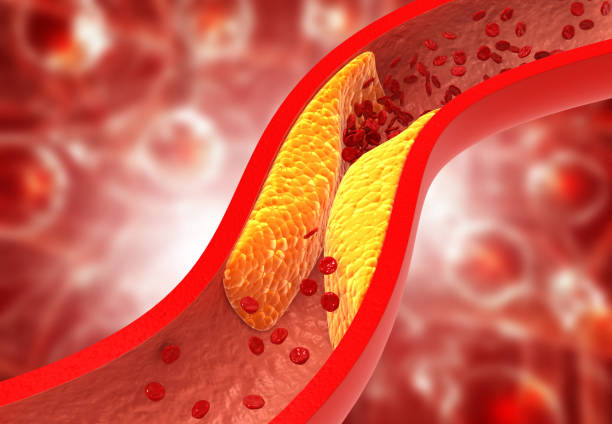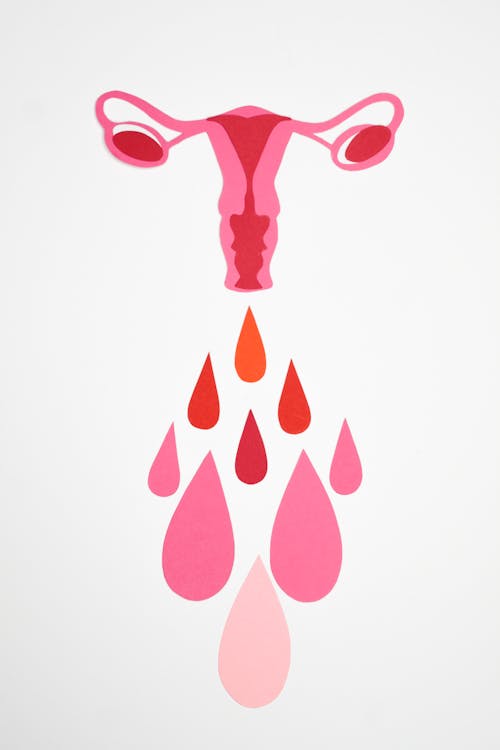10 causes of female infertility and a cure
For a female to get pregnant and carry it to term is a process that is complicated. Female infertility happens when some things are not functioning properly or some things go wrong.
These are some causes of female infertility, though are not all inclusive though.
Couples going through infertility should see their health care provider.
OVUL8PLUS
OVUL8PLUS contains just the right formulation of herbal extracts to support the female body hormone levels, improves egg health, promotes healthy conception and cure infertility in women. It supports regularity of ovulation and cycle. It cures barrenness in women.
10 Causes Of Female Infertility
1) Endometriosis
Endometriosis happens when the cells that line the uterine cavity, which is called the endometrium, are seen outside the uterus instead. It is common in women in their 30s and 40s.
There is a link between infertility and endometriosis.
Research shows that 25% and 50% of infertile women have endometriosis and between 30% and 40% of women with endometriosis are infertile. The exact cause of female infertility has not been identified but it could be the following
Causes Of Endometriosis
- Problem with menstrual cycle: Retrograde menstrual flow is a likely cause of endometriosis. This is the tissue shed during the monthly flow through the fallopian tube into other areas of the body, such as the pelvis.
- Genetic factors: Endometriosis could run in families, which means it can be inherited in the genes.
- Immune system problems: When the immune system is faulty, it may likely fail to discover and destroy endometrial tissue growing outside the uterus. women with endometriosis are prone to immune system disorder and certain cancer
- Hormones: The hormone estrogen may promote endometriosis. Research is looking to find out if endometriosis could be a problem with the body’s hormone system.
- Surgery: Surgery, especially of the abdominal area, such as a Cesarean (C-section) or hysterectomy. During this type of surgery, endometrial tissue could be picked up and moved by error. For example, endometrial tissue has been found in abdominal scars.
Symptoms Of Endometriosis
- painful sex
- painful menstrual cycle
- pain during bowel movement
- pain in the lower back
- spotting between periods
- digestive problems
- infertility
2) Polycystic Ovary Syndrome (PCOS)
The most common cause of female infertility is PCOS. A condition where a woman’s ovaries and, in some cases, adrenal glands produce more androgens (a type of hormone) than normal. These hormone high levels interfere with the growth of ovarian follicles and release of eggs during ovulation. This causes fluid-filled sacs, or cysts, to develop within the ovaries.
5% to 10% of women in the United States are said by researchers to have PCOS.10 The exact cause of PCOS is not known, but research suggests that a combination of genetic and environmental factors could cause PCOS.
3)Anovulation

Anovulation is one of the 10 cause of female infertility and it is the most common. It means absence of ovulation. It occurs in 40% of women going through infertility.
Anovulation occurs when an egg (ovum) doesn’t release from your ovary during your menstrual cycle. For there to be a pregnancy, an egg must be released.
Causes of Anovulation
- Ovarian or gynecological conditions, which includes primary ovarian insufficiency (POI) or polycystic ovary syndrome (PCOS)
- Obesity
- Age: Aging diminished ovarian reserve which refers to a low number of eggs in a woman’s ovaries.
- Endocrine disorders: Examples are thyroid disease or problems with hypothalamus, which affect the hormones produced by the body so that there might be too much or too little of a hormone or group of hormones
- Lifestyle
- Environmental factors
4) Tubal Occlusion
Over 30 percent of women diagnosed with infertility have damaged or blocked fallopian tubes.
Fallopian tubes are female reproductive organs. It connects the ovaries and the uterus. Each month at ovulation, which happens approximately in the middle of the menstrual cycle, the ovary releases at least one egg which the fallopian tubes carry from an ovary to the uterus.
An egg is fertilized by sperm in the Fallopian tube, after fertilization, it moves through the tube to the uterus for fertilization.
If the fallopian tube is blocked:
*the egg released cannot move through the Fallopian tube to be fertilized
*the sperm cannot get to the eggs,
*there won’t be a path for the fertilized egg to move to the uterus.
Causes of Tubal occlusion (Blocked Fallopian Tube)
- Fibroids
- Previous ectopic pregnancy
- Endometriosis
- Sexual transmittted infection for example chlamydia, Gonorrhea
- Pelvic inflammatory disease.
Symptoms
No symptoms has been linked to Blocked fallopian tubes. Most women get to know they have blocked tubes while trying to get pregnant.
Blocked fallopian tubes can lead to mild, constant pain on one side of the abdomen. This often occurs in a type of blockage called a hydrosalpinx. This is when fluid fills and enlarges a blocked fallopian tube.
Conditions like endometriosis that can lead to a blocked fallopian tube can cause their own symptoms. Symptoms include severe pain during the menstrual cycle, heavy periods and pelvic pain.
5) Implantation Failure

Implantation failure refers to the inability of a fertilized egg to implant in the uterine wall. There cannot be a pregnancy without implantation. causes of implantation failure are not known but it could be related to below
Causes of Implantation failure
- Genetic defects in the embryo
- Scar tissue in the endometrial cavity
- Embryonic defects
- Progesterone resistance
- Thin endometrium
- Endometriosis
6)Premature ovarian insufficiency (POI)
This happens when a woman’s ovaries fail before she clocks 40 years . POI is also called premature menopause. POI is a condition in which your ovaries stop producing hormones and eggs at a young age. However, ladies with POI ovulate irregularly, if at all, and may have abnormal levels of ovarian and pituitary hormones due to problems with their ovaries.
If you are diagnosed with POI, you may have trouble getting pregnant. However, pregnancy is possible, though rare. Research states that about 5% to 10% of women with POI get pregnant without medical treatment.
7)Uterine Fibroids
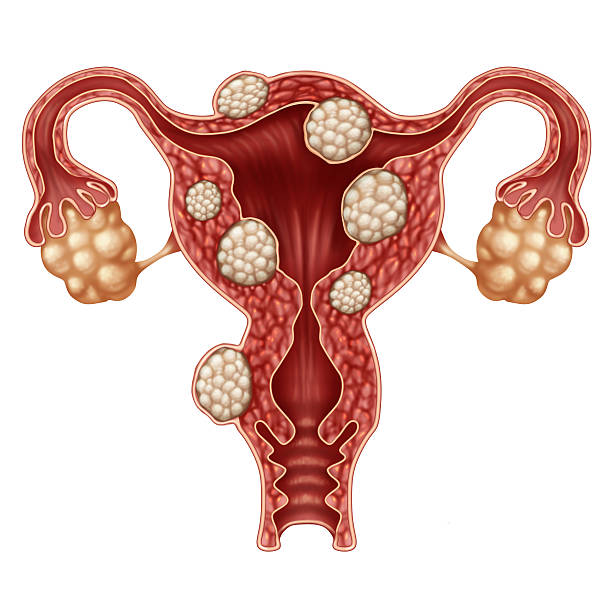
Uterine fibroids are noncancerous growths that develop inside the uterus. Uterine fibroids depending on their size and location can cause symptoms. Scientists are yet to find out the causes of fibroids, however, they believe there might be a genetic basis.
Fibroids can cause infertility in women, It is found in 5% to 10% of infertile females. Fibroids located in the uterine cavity as opposed to those that grow within the uterine wall or those that are larger than 6 centimeters in diameter are more likely to have a negative effect on fertility.
Effect of Uterine Fibroid on Female Infertility
- Changes the position of the cervix, which reduces the number of sperm that enter the uterus
- Changes the shape of the uterus, which can interfere with the movement of sperm or implantation
- Blocks the fallopian tubes, which hinder sperm from reaching the egg, It also keeps a fertilized egg from moving to the uterus
- Interferes with blood flow to the uterus, which can prevent the embryo from implanting
Symptoms of Uterine Fibroids
If you have fibroids, you might have no symptoms, however, it can make you uncomfortable. These are some known symptoms of Uterine Fibroids.
- Painful periods
- Heavy menstrual bleeding
- Bleeding between periods
- Back pain
- Constant urination (caused by the fibroid pressure on the bladder)
- Anemia (inadequate red blood cells)
- Painful sex
- Pelvic pressure (feeling full in your lower abdomen)
- Reproductive challenges like infertility, constant miscarriages and early onset of labor during pregnancy
- Obstetrical problems, such as increased likelihood of cesarean section
Causes of Uterine Fibroids
Scientists don’t know the causes of uterine fibroids. It was suggested that some factors play a role in their growth. Exact causes of uterine fibroids are not known, research evidence suggests that any or all of the factors below could play a role in their growth.
- Genetics (Estrogen and progesterone)
- Vitamin D deficiencies may be linked to uterine fibroids
- Growth hormones
- Stress
- Fibroids could also be caused by many factors interacting with one another.
8) Autoimmune Disorders

When your body’s immune system attacks your body tissues that it usually ignores, that is Autoimmune disorder. Autoimmune disorders like lupus, Hashimoto’s and other types of thyroiditis, or rheumatoid arthritis, have an effect on fertility.
What causes this is not well understood and differs between diseases, However,they are thought to involve inflammation in the uterus and placenta or medications used to treat the diseases. Both genders can make antibodies that attack sperm or the reproductive organs.
9) Immature Ovum/Egg
An immature ovum/egg, refers to an egg not mature enough to be fertilized by sperm. Eggs, which develop within follicles in the ovary, have to undergo a required division of cells to be prepared for fertilization. An immature ovum is one of the 10 causes of female infertility.
An immature egg occurs when the egg is not released at the right time. This immature egg may not make it down the fallopian tubes, or may not be fertilized by sperm
Causes Of Immature Ovum/Egg
There are a variety of reasons eggs may not mature.
- PCOS
- obesity
- lack of specific proteins needed for the egg to mature.
- age
- Diminished egg reserve
10)Infection

The last 10 causes of female infertility is infections. If infection is left untreated can cause infertility in women, It can also cause low sperm count in males. Gonorrhea and chlamydia left untreated in women can lead to pelvic inflammatory disease, which might cause scarring that blocks the fallopian tubes.
Untreated syphilis gives a higher risk for a pregnant woman to have a stillbirth.
Chronic infections in the cervix and surgical treatment of cervical lesions associated with human papillomavirus (HPV) infection can also reduce the amount or quality of cervical mucus. Problems with this sticky or slippery substance that collects on the cervix and in the vagina can make it difficult for women to get pregnant.
There you have it, 10 causes of female infertility,
Let’s Talk About Sperm
![]()
Low sperm count, also called oligospermia, is a major cause of male infertility. Sperm count is considered low if it dips below 15 million sperm per milliliter (mL) of semen, although the average is around 75 million sperm per mL.
When your man have low sperm count, your chances of getting pregnant is low.
Low sperm count can be treated with SpermBoost
Spermboost made with natural ingredients does these to the Males Sperm
- Increases its quality
- Balances the viscosity
- Reduces oxidative stress on sperm level
- Improves the quantity
- Stimulates spermatogenesis to improve motility
- Contains antioxidant to correct abnormal morphology
- Lengthens sperms lifespan
- Invigorates Sperms survival resilience in the vagina and womb
- Gives higher insemination success rates
- Changes watery semen
- Cures male infertility
READ MORE HERE
A Cure To Female Infertility

Ovul8plus contains just the right formulation of herbal extracts to support the female body’s hormone levels naturally, improves egg health, promotes healthy conception and cure infertility in women. It supports regularity of ovulation and cycle
QUALITY INGREDIENTS: With an all natural, traditional herbal formula that brings together vital ingredients, Ovul8plus is designed to promote female reproductive wellness as part of an overall health and diet regimen, supporting fertility and optimizing your chances to conceive.
MADE TO CURE FEMALE INFERTILITY: Infertility affects 10% of women with different contributing factors. Ovul8plus is formulated for women going through infertility.
With an effective formula that synergistically combines herbs, it is designed to naturally strengthen female reproductive health while preparing her body for conception
OVUL8PLUS
- regulates menstrual cycle
- treats hormonal imbalance
- restores and normalize ovulation(anovulation)
corrects polycystic ovary syndrome(PCOS) - enhanced fertility
- eliminates the effects of anti-sperm antibodies
- relieves menopausal symptoms
- Cures barrenness
Testimonials On Ovul8plus
- I highly recommend this to women diagnosed with PCOS. I was cured from PCOS after using Ovul8plus – Benedicta
- I did not experience any side effects but when I was sick a couple of months after taking the product, the doctor said it was because I was pregnant. – Itunnu
- An amazing product, I can’t believe I am going to be a mother. I have been ridiculed and disgraced. I just used it for a month and I missed my period that same month. I was given some tactics to put in place during ovulation. You guys are amazing. THUMBS UP!READ MORE ABOUT OVUL8PLUS HERE
Add This
- Cut down on carb if you have PCOS
- Exercise
- Quit smoking
- Watch the stress
- Cut the caffeine
- Eat healthy
- Avoid high protein diets
